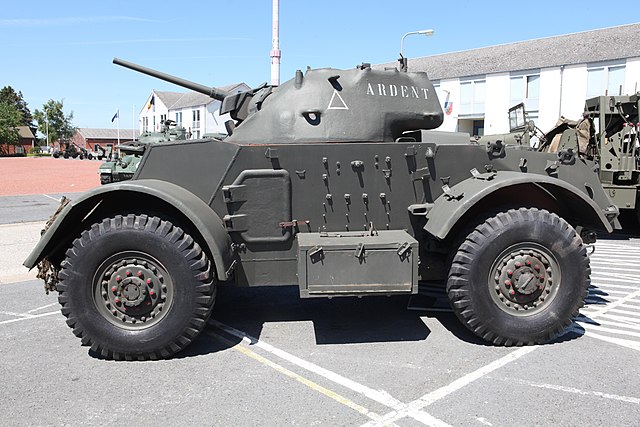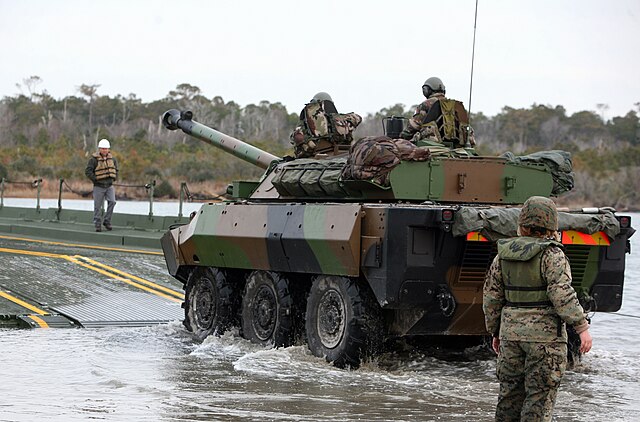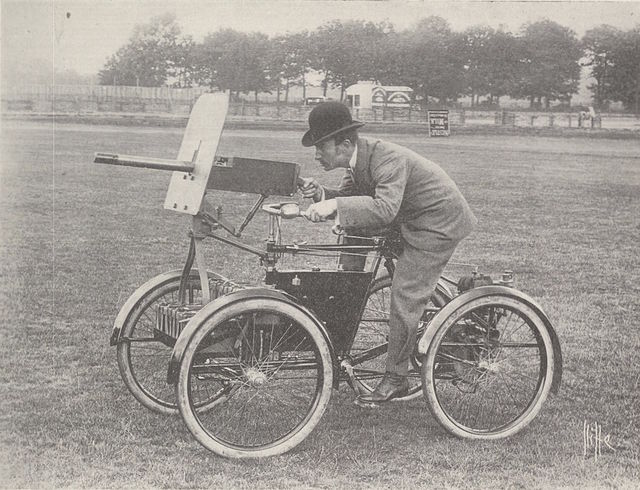The Panhard AML is an armoured car with reconnaissance capability. Designed by Panhard on a lightly armoured 4×4 chassis, it weighs an estimated 5.5 tonnes, and is thus suitable for airborne deployment. Since 1959, AMLs have been marketed on up to five continents; several variants remained in continuous production for half a century. These have been operated by fifty-four national governments and other entities worldwide, seeing regular combat.
Panhard AML at the Musée des Blindés, Saumur.
Panhard AML-60, one of several which entered service with the French Mobile Gendarmerie.
Plinthed Israeli AML-90 at Yad La-Shiryon.
Flat margin (turret race) between an Egyptian T-54/55's turret and angled glacis, one of the few areas on the tank vulnerable to 90 mm HEAT munitions.
A military armored car is a wheeled armored fighting vehicle, historically employed for reconnaissance, internal security, armed escort, and other subordinate battlefield tasks. With the gradual decline of mounted cavalry, armored cars were developed for carrying out duties formerly assigned to light cavalry. Following the invention of the tank, the armored car remained popular due to its faster speed, comparatively simple maintenance and low production cost. It also found favor with several colonial armies as a cheaper weapon for use in underdeveloped regions. During World War II, most armored cars were engineered for reconnaissance and passive observation, while others were devoted to communications tasks. Some equipped with heavier armament could even substitute for tracked combat vehicles in favorable conditions—such as pursuit or flanking maneuvers during the North African campaign.
U.S. T17E1 Staghound armored car of World War II
AMX-10RC, a modern armored car of the French Army
F.R. Simms' Motor Scout, built in 1898 as an armed car
F.R. Simms' 1902 Motor War Car, the first armored car to be built








